The early days of June feel like summer is just beginning. It is only now in Ireland, that the days are filled more with blue sky than cloud, and the air takes on some warmth. Light lingers in the sky way past my bedtime and almost until midnight. I really love the long warm clear evenings of Irish summer, and the hard brightness of the stars that glitter in the clear black vastness until the orb of the sun resurfaces in the morning. It is hard to believe that in just a few weeks we will begin the slow, almost indiscernable descent into the cold and dark of winter.
Over the last two years, as I have taken to walking my local landscape, I have come to know its rythms and more-than-human inhabitants. Never a gardener, I have watched the life cycles of my local wild plant neighbours with wonder and joy. The reappearance of each one after a long winter absence feels like greeting an old friend. And every year, there are new friends to make. This journey with the Cailleach has made me part of this multi-faceted landscape in ways I had never imagined, and is taking me in new directions that I will continue to share here on H A G.
But also, it fosters yearnings to reconnect with my roots. When I began writing for others back in 2012, it was to share Irish mythology, archaeology and history; these are the three roots that anchored me to Irish soil, that reached into my heart, occupied my mind, and wove patterns through my writing.
I have wandered far from those roots on this new path. The lichened, crumbling stones placed by humankind over the aeons, the stories and legends attatched to them and to the plants and animals of the wild, ourselves and our place within it, are all equal participants in this greater picture we call landscape. But although we all move across this earth, leaving our marks in the mud, we are not all grounded. I believe this disconnect to be the source of much human discontent.
Some of us find our way back. I am impressed and humbled by the wave of older women in particular who reweave themselves back into the fabric of the land. Is it that we are not done mothering? Is it the transference of care from our own young to something else we instinctively feel is most in need of nurture? There is no doubt that our world is currently under attack by the actions of our own kind, and that those who have the power to disrupt these destructive behaviours prefer to sit back and let it happen. I guess they have deep pockets.
Human civilisations come and go. Dominant species give way to the ascendance of the new. Mountains rise and crumble. The sea licks the land clean. As the Cailleach herself said, “When the ocean was a forest full of trees, I was then but a young girl.” 1 What goes around, comes around. Existance and time are circular. In the meantime, we do what we can. The land shows me happiness and hope.
Here on H A G, I have written a lot about wild Irish plants, but I haven’t shared much of their mythology. In going back to my roots, so to speak, I will share the folklore of the plants I introduce to you here on H A G.
And right now, the fields and hedgerows of Ireland are engaged in a scrambling frenzy of green growth, high on summer plenty, and awash with the blaze of wildflowers. And one of the most impressive is this:
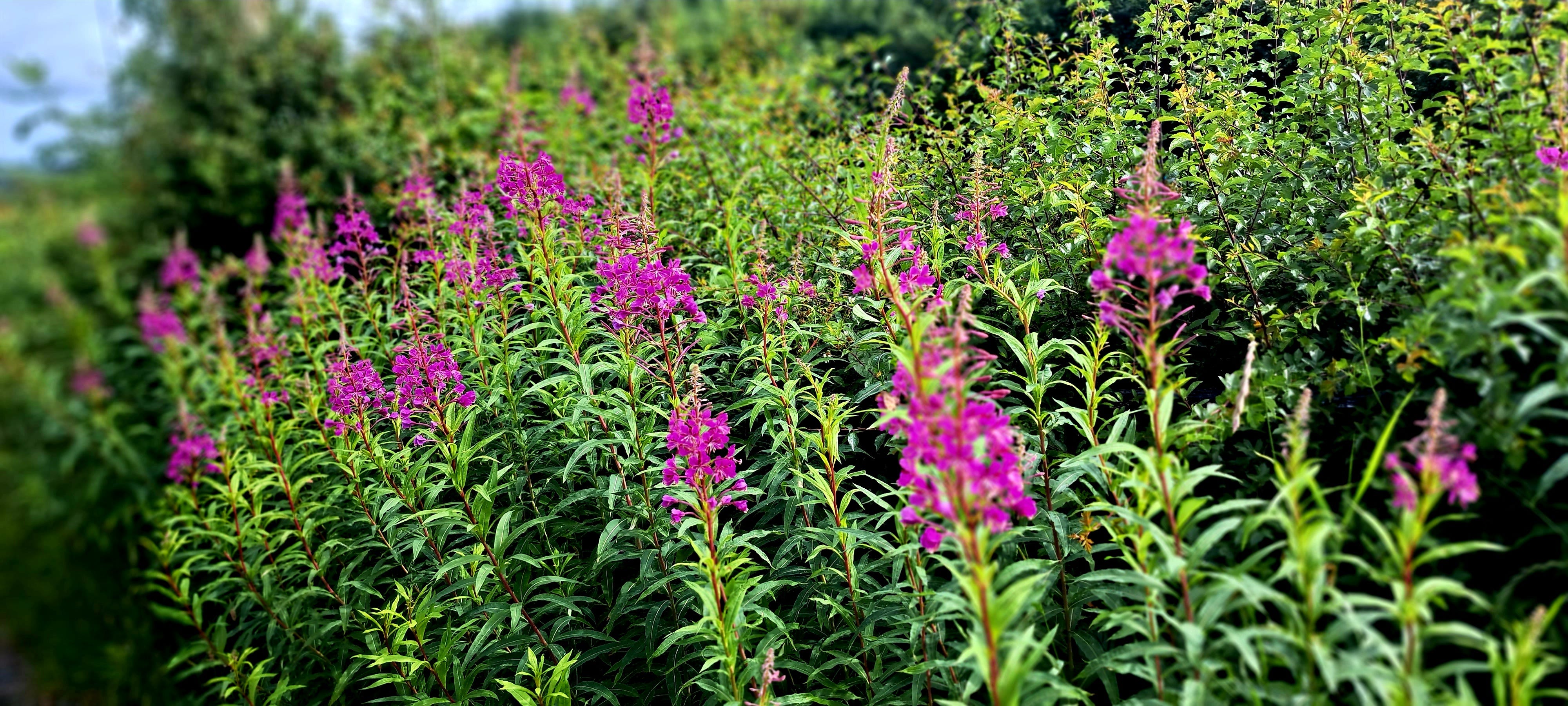
It’s called Rosebay Willowherb. It grows up to a height of 2m, in great stretches of vibrant eye-popping purple-pink, and it’s everywhere - roadsides, embankments, railway sidings, bogland, woodland, building sites, and anywhere the ground has been recently disturbed. It brightens up all the abandoned, un-loved forgotten places, and I have fallen deeply under its spell.

In ancient times, it was the first plant to grow on the hillsides after the gorse had been burnt back, which is why it was named Lus na Tine in Irish, meaning ‘fireweed’. According to Niall Mac Coitir, historically, fireweed was a rare plant; it is only in recent centuries following the upheaval of the earth in order to lay railways, fell whole swathes of forest and create industrial waste lands, that this stunning wild plant has been enabled to thrive and proliferate. 2 As such, Lus na Tine demonstrates perfectly to me the power of nature to adapt and reassert itself, despite what we do to it, and that gives me hope.
Medicinally, its root was powdered and thought to stop internal bleeding, whilst an infusion brewed of its leaves was used to treat asthma. However, ongoing research suggests it may contain properties that could be useful in treating cancer. 3
Despite its proliferation and beauty, however, it is a disappointment to me that I could find no trace of this plant in Ireland’s myths, even though it is a native plant. Perhaps this is due to the fact that until recent times, as Mac Coitir claims, it was indeed such an uncommon plant.
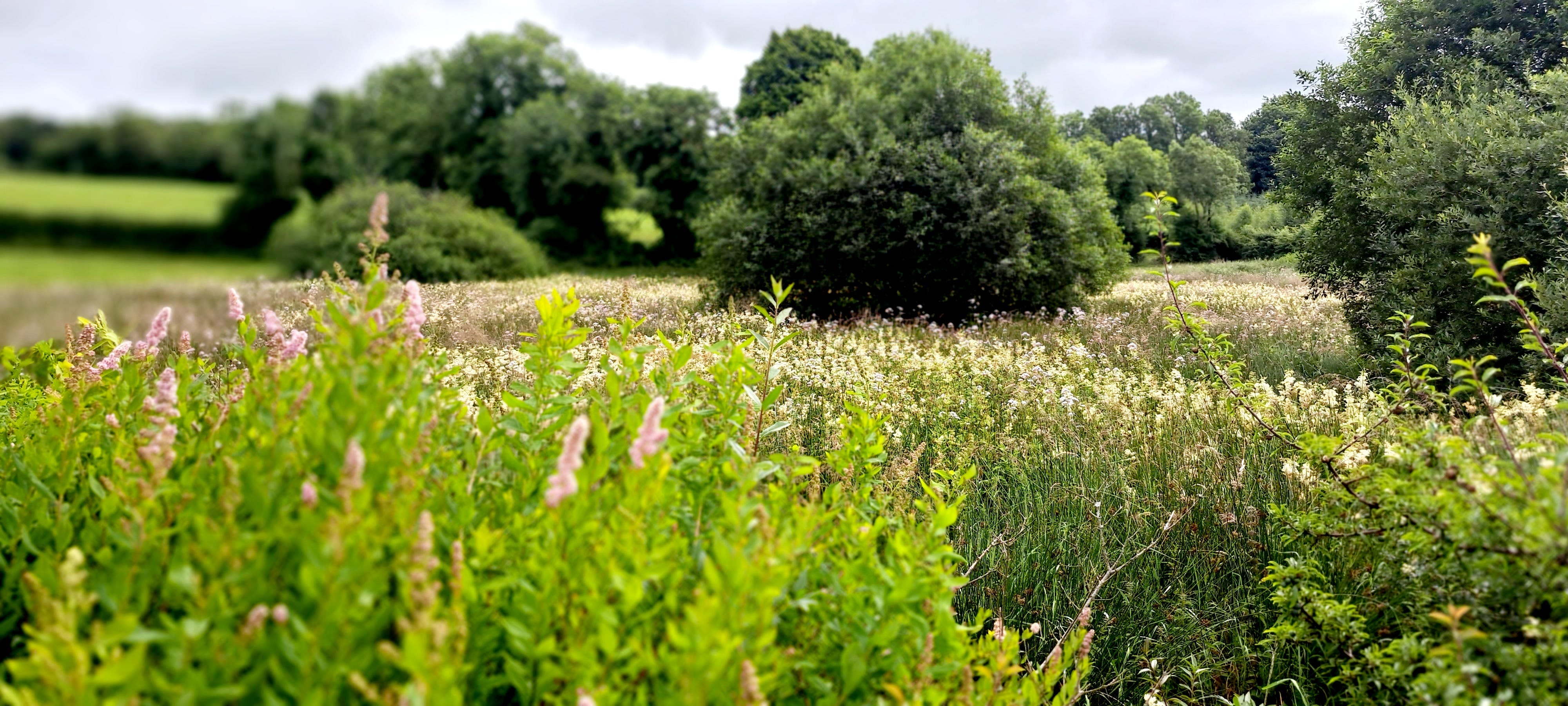
In Irish mythology, Cuchulainn suffered from alternating bouts of malaise and rage. It was quite possibly drug-induced, perhaps through use of Amanita, but according to the stories, he was treated by being bathed in infusions of Meadowsweet.
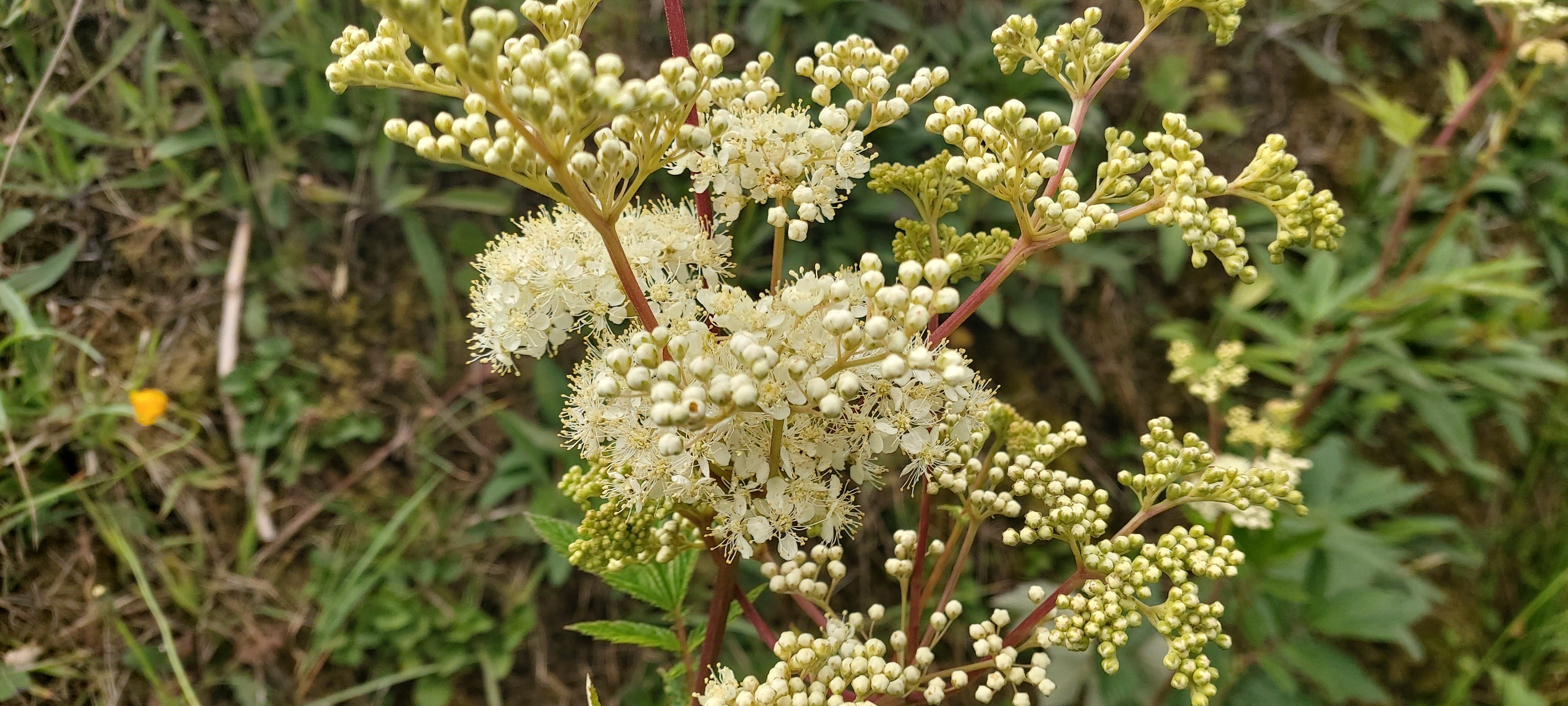
Its Irish name is Airgead Luachra, which means 'silver rush', perhaps because the underside of its leaves are quite silvery in colour, but it is also known as Crios Conchulainn, which I believe is translated as ‘Cuchulainn’s Belt’. Maybe he carried the herb in a little pouch or amulet attached to his belt, in case it was required to soothe his fits and rages.
It was believed that meadowsweet could aid in falling asleep, but in folklore, there was danger in that, for it was a sleep from which one might not awake. And according to legend, Cuchulainn once fell into a sleep that lasted a whole year, during which time he appeared to leave his body and go into the Otherworld, embarking on a dangerous affair with Fand, the wife of sea-God, Manannán.
Interestingly, it is from this plant that aspirin is derived; meadowsweet contains salicylic acid, which is a disinfectant, pain-killer and anti-inflammatory. Beginning in late June, the hedges and verges are a-froth with its downy creamy flowers, and insects adore its heady scent, a lovely gentle milky-honey-almond sweetness. On a warm day, that scent hovers in invisible clouds in the air. I feel like I wait impatiently all year for its subtle arrival.

In Irish, the Bluebell is known as Coinnle Corra. Of course, these delicate spring-blossoming wild flowers are long gone by the time mid-summer comes around, although some still linger in damp, shady spots in my local area just now. Regardless, they have their place in Irish mythology.
On her wedding night to Fionn mac Cumhall, Grainne was said to have mixed bluebell with tormentil and secreted the mixture into the wedding guests’ wine, thus sending them all to sleep so she could elope with her beloved Diarmuid. In The Destruction of Da Derga’s Hostel, Étain was described as having eyes of “hyacinth blue” (botanists originally identified Irish bluebells as related to the hyacinth). In another tale, The Colloquy of the Ancients, Saint Patrick is given a lift in a chariot by a young man with “cheeks as red as a bullfinch and eyes as blue as hyacinth”. 4 Clearly, the bluebell is thus associated with physical beauty.
Although it was traditionally used to stop bleeding, and also as a diuretic, I can’t find any reference to the bluebell’s sleep-inducing properties. Apparently, though, the bluebell’s sticky sap was used as a glue to bind books, and to stick feathers to the ends of arrows. Who knew?
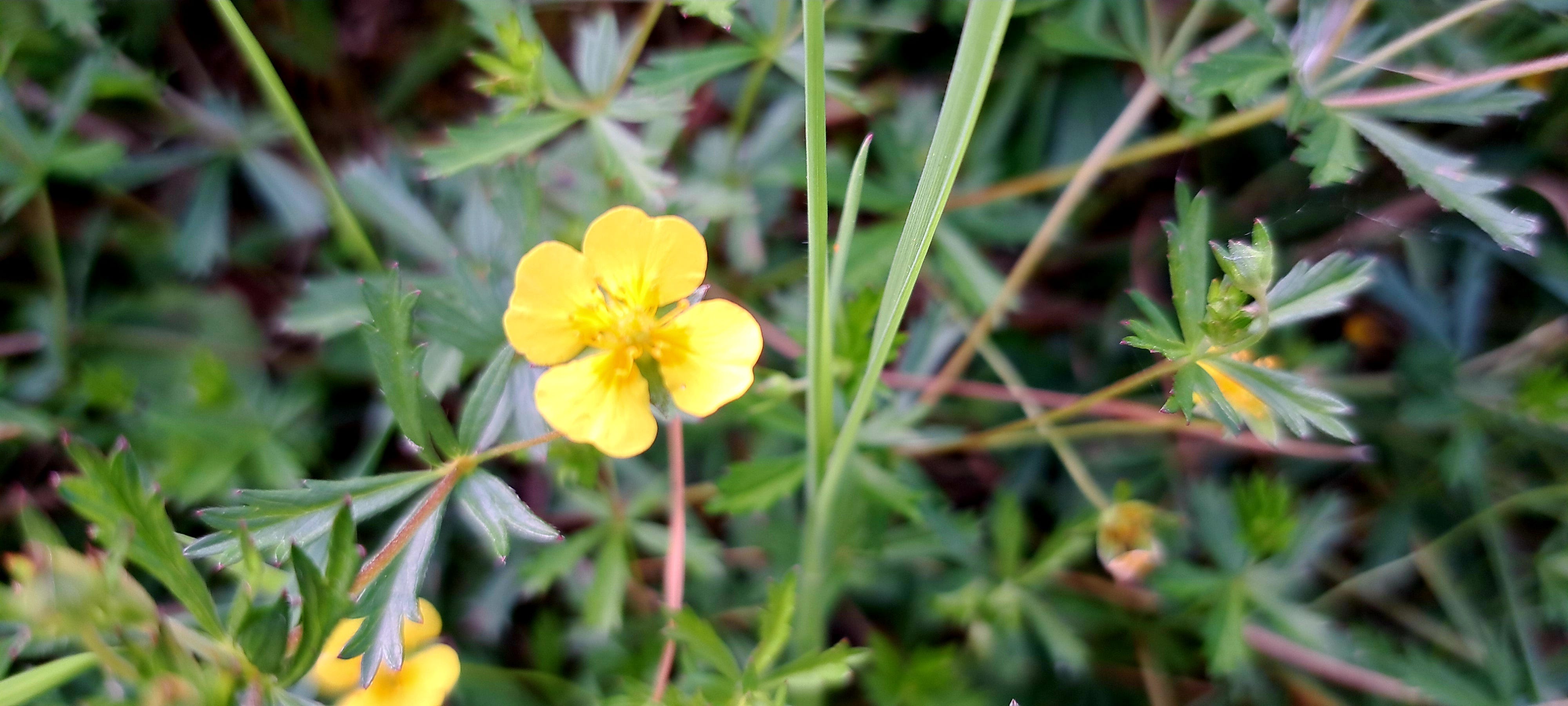
Tormentil, or Néalfartach in Irish, is a little yellow flower that looks similar to a buttercup, and which commonly grows all over Ireland between May and September. It was used for pain relief and to treat digestive problems. It was also traditionally mixed with St John’s Wort to create a sleeping draught. 5 So perhaps there is some truth in the use of tormentil to send all Grainne’s wedding guests to sleep.
Its Irish name, Néalfartach, comes from the word néal meaning ‘depression/ gloom, or sleep’, and fartach meaning ‘hurt/ injury’. In Co Cork, it was known as Lus an Chodlata, meaning ‘herb for sleep’, suggesting that it may well have been used for promoting sleep.
A few days ago (20th May) I was walking one of my usual routes musing about writing this post, and how I didn’t have a photo of tormentil to show you; immediately, I came across a clump growing on the roadside. It is the only patch I know of in my local area. So now I have an image for you… thanks, spirit guides! Also, if any perimenopausal H A Gs are having trouble sleeping, perhaps this might work for you…
NB. Please consult a herbalist or medical practitioner before consuming any wild plants! Do your reasearch. I would add that if your lack of sleep is due to loss of hormones, it is more than likely that the ‘cure’ requires replacing those lost hormones. I used to think my Mum was a hypochondriac when she was in her fifties (sorry Mum! I love you, please forgive me, thank you); she was always in health food shops looking for natural remedies for her many various symptoms. I now realise she was in perimenopause; the symptoms of declining oestrogen are manifold and can be absolutely debilitating, are little understood, the needs of perimenopauseal women whitewashed, belittled and ignored. But that’s a conversation for another time…
According to mythology, the warrior Nera disappeared into the Otherworld at Samhain, the beginning of winter, yet returned bearing summer flowers: wild garlic, golden fern and primroses, Sabhaircín in Irish.
This is a strange and convoluted story in which Nera receives a violent vision from the Sidhe showing the awful fate of his people if they don’t destroy the Hill of Cruachan. He warns Queen Medb and convinces her that he speaks the truth by giving her the summer flowers he brought back from Tír na nÓg.
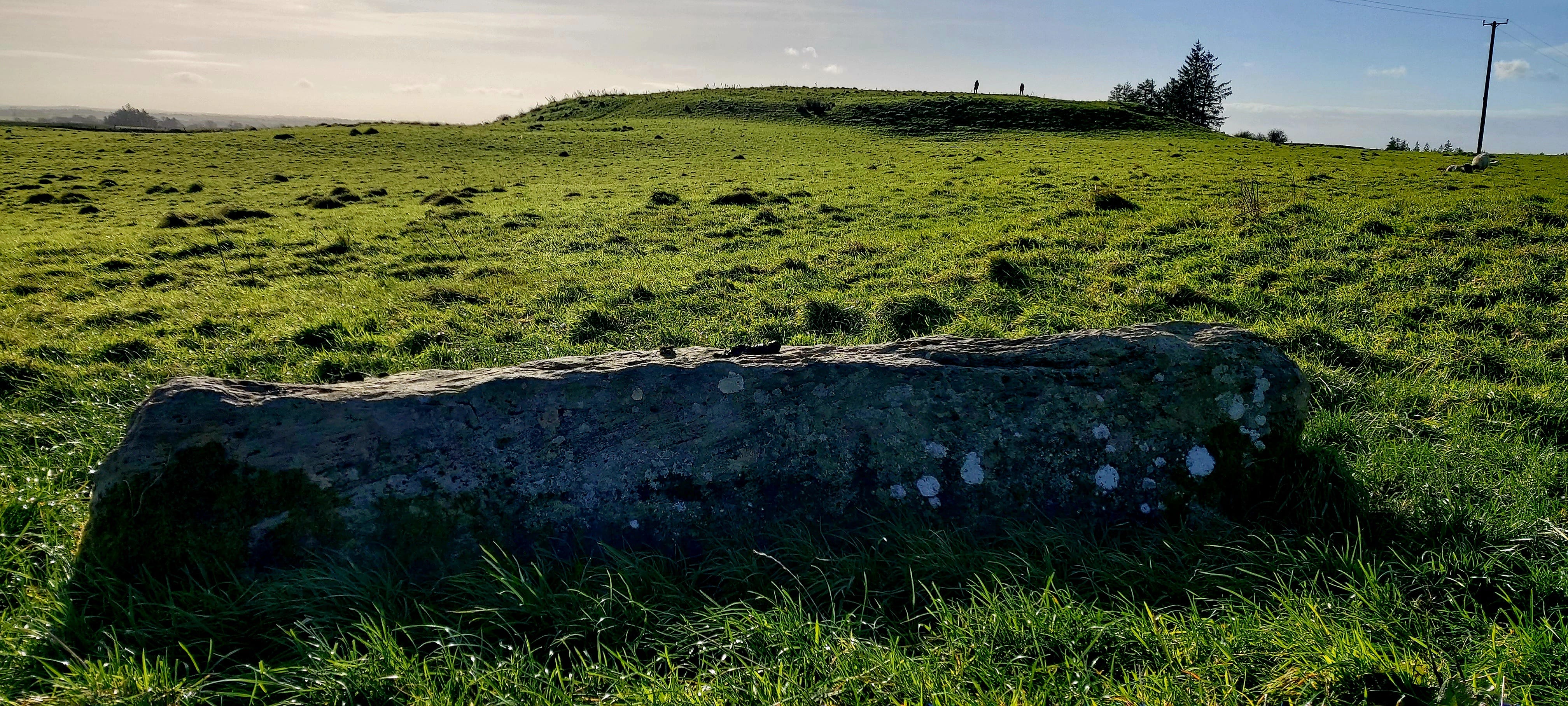
Honeysuckle, known as Féithleann in Irish, is associated with the tragic love story of Baile and Aillinn. These two lovers both died unnecessarily from grief, believing the other already dead. An apple tree grew from Aillinn’s grave mound, and a yew from Baile’s. These were eventually cut down, and tablets made from them, engraved with their stories. When these tablets were brought to King Cormac’s house in Tara, they sprang together and cleaved to each other as tightly as honeysuckle around a branch and could not be parted.

Finally, the foxglove, known as Lus Mór in Irish, meaning the ‘great herb’, is used to describe the beautiful blush of the pure cheeks of Étain, Deirdre, and warrior Conall Cernach, another plant associated with physical beautiy and purity in Irish legend.
H A G is stretching out new branches while her roots burrow deeper.
I mentioned earlier in this post about going back to my roots in order to grow; I mean my literary roots. I initially started blogging back in the day about Irish mythology, because I had loved Greek myth as a child, and Arthurian legend as a young adult, but I had never come across Irish myth until I moved to Ireland. I wanted other people to learn and love it as much as I do… and believe me, Irish myth is WILD!
What I love to do is visit a place, perhaps a burial mound, an old castle, or a ring fort, and then tell the stories associated with it, particularly the female story, if I can unearth one. I’m going to do a bit more of this.
Most importantly, all my posts from now on will be free to all. Yaaaaay! This month, it is a year since I launched paid subscriptions, and I’d like to sincerely thank all those of you who decided to support my work with a paid subscription. It never really sat well with me, though, that only those who paid got them all. Every plant I ‘discover’ brings me joy and hope, and I think we all need more of that in these strange, troubled times. Caring, love, joy, hope, sharing… these are aspects of ourselves and living, of being in human community, of our guardianship of this planet, that we can’t, and shouldn’t, put a price on.
Having said that, each post I write involves a great deal of my time in research, site visits, filming, photography, editing, etc. If you enjoy reading my newsletters, if you value the work I do here on H A G and would like to recognise that, you can actually pay me, either through a paid subscription, or you can ‘Buy me a Coffee’.
The new pricing model, currently €30 for an annual paid subscription, is much lower than the Substack average in order to be affordable at a time when we are all moving through a cost of living crisis. I’ll be honest, you won’t get anything extra for paying! But you will get my undying gratitude, and a sense of fair play and a feeling of wellbeing for having supported a creative’s work.
Please note, however, that if you prefer to pay monthly, the lowest monthly charge Substack will allow is €5. I just want tyou to be aware that this is not something I can control.
In the future, there may also be H A G merch - I’m thinking beautiful sustainable eco-friendly notebooks, pens and tee-shirts! And downloadable stuff, like short courses, ebooks, and video how-to’s. We’ll see.

Finally, I’d like to say a few words in honour of John Willmott, also known as the Woodland Bard, who passed away recently. I know that some people who subscribe to H A G came here from John’s Substack, Nature Folklore, and you may not yet have heard of his passing, or were wondering why he hasn’t sent out any newsletters lately.
Although I only met John once, I’d known him for many years via our online presences. We were interested in, and always supported each other’s work. He had so much knowledge stored away in his mind, and was always so generous in sharing it with others. I learned a lot from him, and will miss his comments and his wise insights popping up on my newsletters.
John was laid to rest in a beautiful wild woodland grave on a sunny day in the dappled shade beneath tall, swaying trees where birds were singing, and butterflies were fluttering. It was the perfect spot for him. Rest well, John.
Somehow, rather than resting, I think he is more likely to be having poetry duels with the Sidhe in the Otherworld!
His Substack is still online, and you can subscribe here.
An Cailleach Bhearra, Screen Ireland. This short film is hauntingly beautiful and quite entrancing, well worth a watch.
Niall Mac Coitir’s Ireland’s Wild Plants - Myths, Legends, and Folklore, The Collins Press, 2018.
Call me cynical if you like, but I just don’t think big Pharma actually want to find cures to our health conditions in wild plants; they can’t control the spread of so-called ‘weeds’, and people treating their ailments for free is detrimental to their profit margins, so the results of their research (the re-learning of lost/ suppressed knowledge) is (again) supressed.
See no. 2 above.
Ibid.





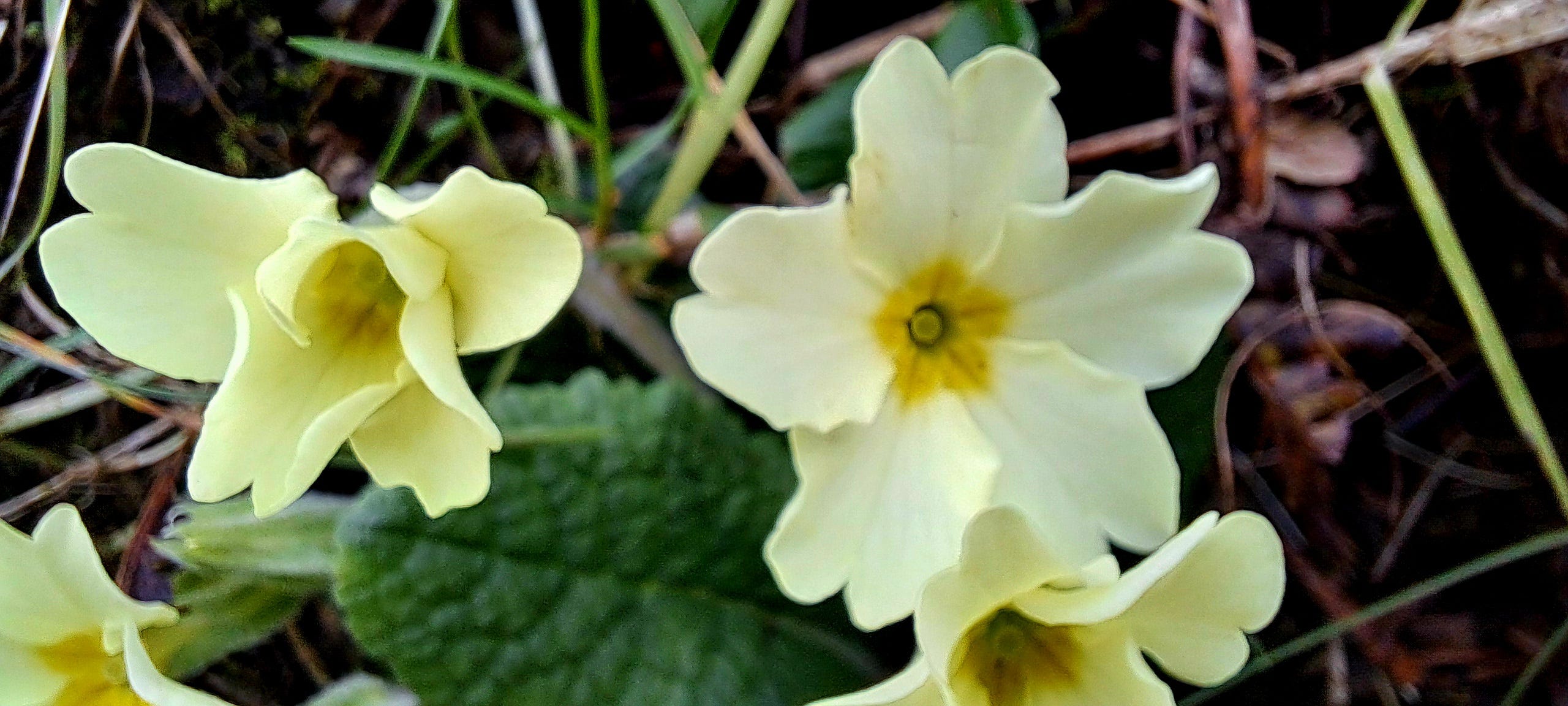


What lovely flowers and especially it is wonderful to hear of their place in Irish culture and folklore. And how interesting to compare your native wildflowers with their North America cousins. Fireweed (same species) is native here, also. What we call meadowsweet here is Spirea alba, also in the Rosacae family -- but we do have a similiar Filipendula species here called Queen of the Prairie, which is pink. Bluebells native to Eastern US are unrelated to hyacinth, being in the borage family...but we do have wild hyacinth, which is in the Lily family and is more blue than your gorgeous bluebells that look almost purple. When I think of hyacinth-colored eyes, I think of Elizabeth Taylor, remarked upon for her "violet" eyes and a very beautiful woman indeed.
Over the years, I adored your posts on Irish mythology and they brought me to the privilege of hiring you to be a guide for my Irish tour and meeting you. I am delighted that you are now discussing the flora of Ireland and including those myths. Your posts are always appreciated and enjoyed. I am proud to be a member of H A G.